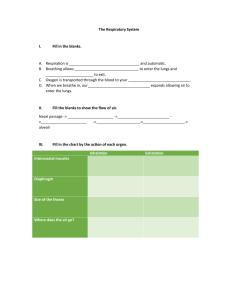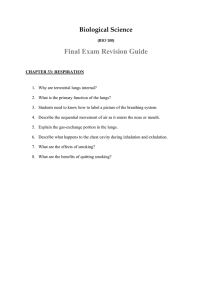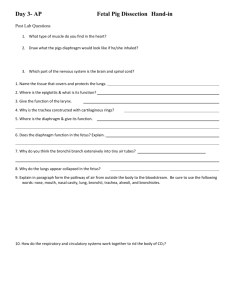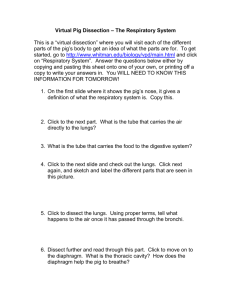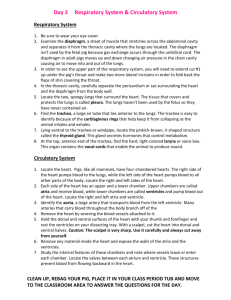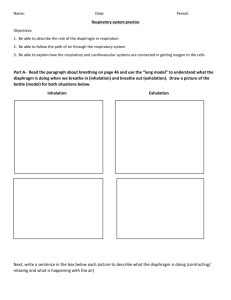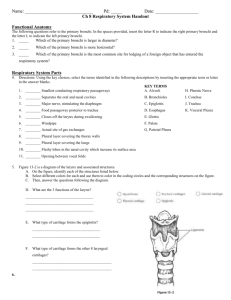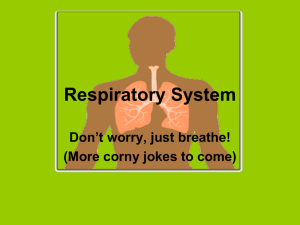Respiratory System completed notes
advertisement
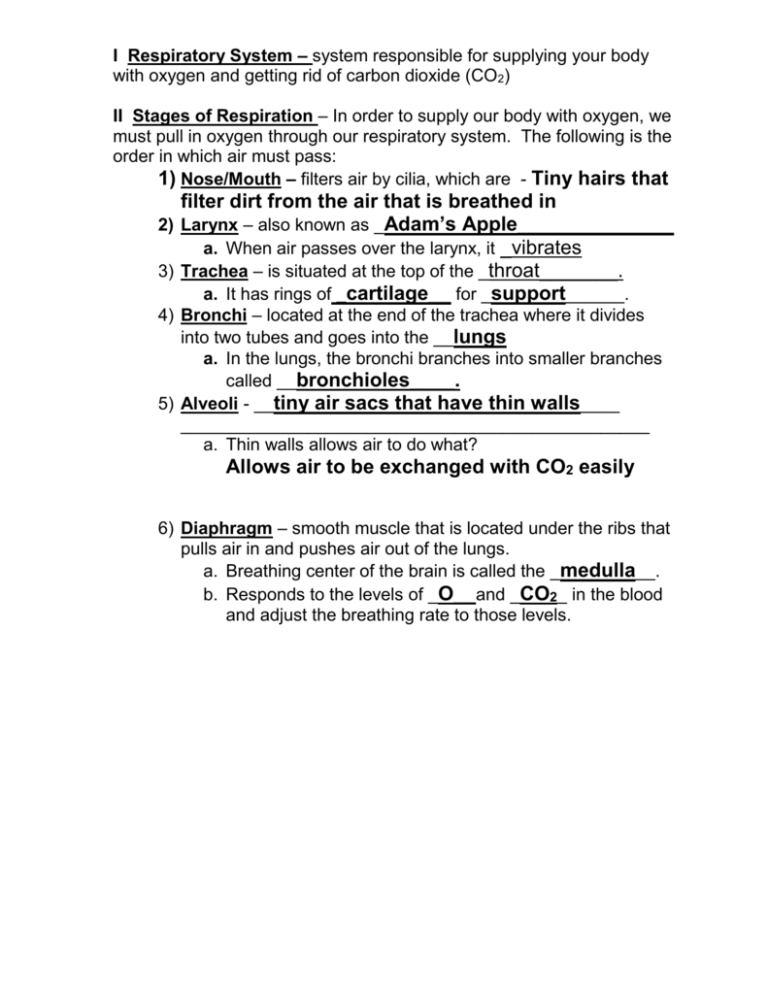
I Respiratory System – system responsible for supplying your body with oxygen and getting rid of carbon dioxide (CO2) II Stages of Respiration – In order to supply our body with oxygen, we must pull in oxygen through our respiratory system. The following is the order in which air must pass: 1) Nose/Mouth – filters air by cilia, which are - Tiny hairs that filter dirt from the air that is breathed in 2) Larynx – also known as _Adam’s Apple______________ a. When air passes over the larynx, it _vibrates 3) Trachea – is situated at the top of the _throat_______. a. It has rings of _cartilage__ for _support______. 4) Bronchi – located at the end of the trachea where it divides into two tubes and goes into the __lungs a. In the lungs, the bronchi branches into smaller branches called __bronchioles____. 5) Alveoli - __tiny air sacs that have thin walls____ ________________________________________________ a. Thin walls allows air to do what? Allows air to be exchanged with CO2 easily 6) Diaphragm – smooth muscle that is located under the ribs that pulls air in and pushes air out of the lungs. a. Breathing center of the brain is called the _medulla__. b. Responds to the levels of _O__and _CO2_ in the blood and adjust the breathing rate to those levels. III The Process of Respiration – 1. INHALATION - air is pulled into the LUNGS. 2. EXHALATION - ________________________________als ____________________________________________o called EXPIRATION, air is pushed out of the lungs. a. These two actions deliver oxygen to the __________, and remove _________________. b. The continuous cycles of inhalation and exhalation are known as __________. Most of us breathe ____ to ____ times per minute. 3. DIAPHRAGM is located along the ______________________. a. Before Inhalation the diaphragm is curved _______ into the chest. During Inhalation, the diaphragm _______and moves ________, causing the volume of the thoracic cavity to ___________. b. When the diaphragm moves down, the volume of the thoracic cavity ___________ and the air pressure inside decreases. c. When the diaphragm __________, it returns to its curved position. This action causes the air in the thoracic cavity to decrease. d. As the volume decreases, the pressure in the thoracic cavity outside the lungs __________. The increase in air pressure and causes the lungs to ___________. The air inside the lungs is then ____________ or _______. IV Diseases and disorders of the Respiratory System 1) Hiccups – 2) Pharyngistis – 3) Laryngitis – 4) Bronchitis – 5) Pneumonia and Tuberculosis - 6) Emphysema – 7) Asthma - 8) Lung Cancer -
